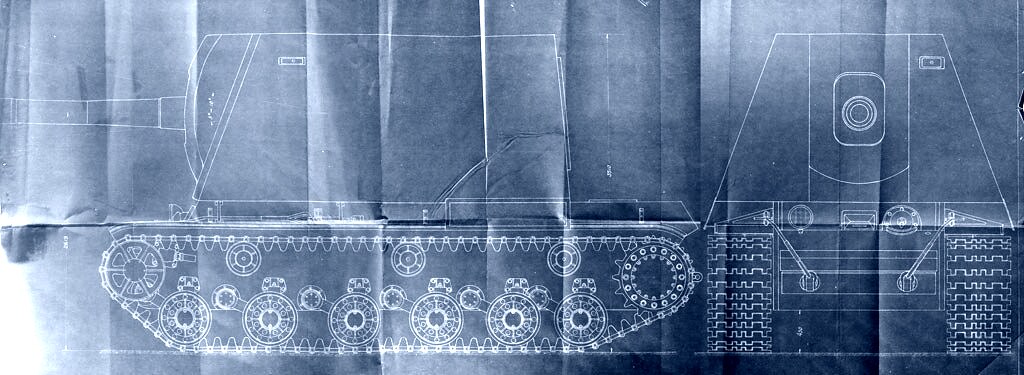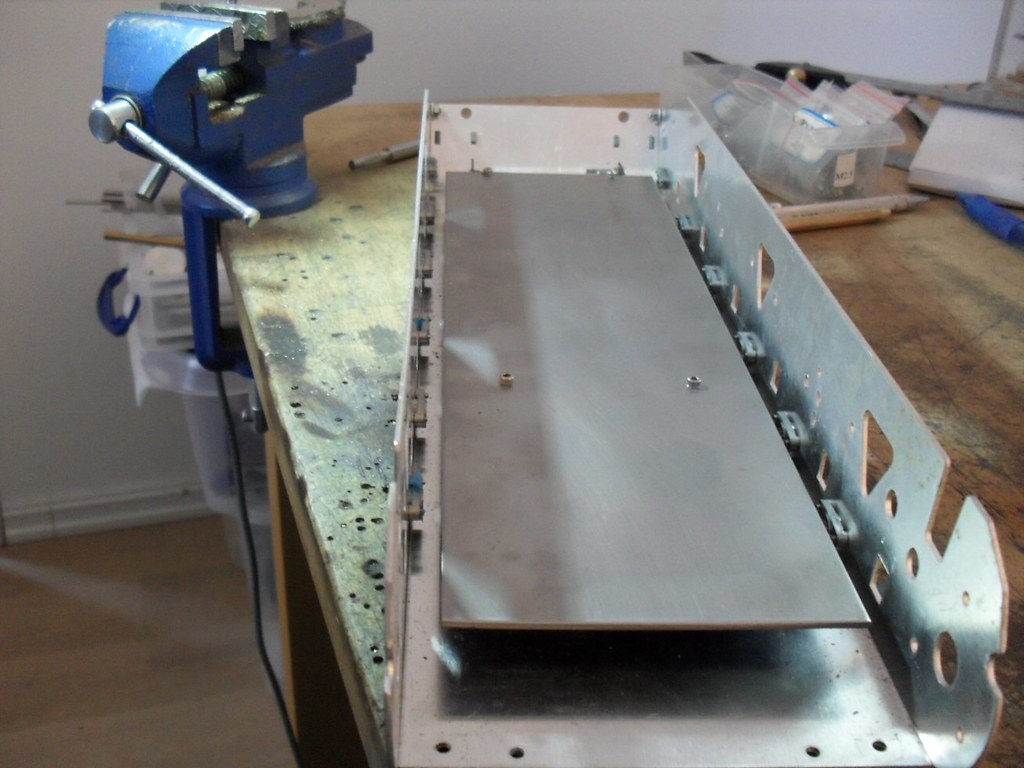In April 1942, deputy commissar of the Soviet tank Industry, Kotin, commissioned development of a heavy assault gun, called U-19, with a 203-mm howitzer on a KV chassis. The howitzer was installed in a casemate with 75 mm frontal armor and 60 mm sides with a removable 30 mm thick roof. For the convenience of loading the howitzer , special equipment was designed, which resembled a similar system used in "Sturmtiger" .
According to the design , the weight of the U-19 was 66 tons, and the height was 3505 mm, which is 5 mm higher than the Maus. The U-19 project entered the Artkom GAU in September 1942 and was ultimately rejected.
At the beginning of 1942, it became clear that one could forget the production of the KV-3 heavy tank in Chelyabinsk. The plans for the manufacture of heavy assault self-propelled guns on the basis of the KV-3 were finally given up in April 1942, although the designers did not abandon the idea of a heavy assault self-propelled gun. The KV-7 assault tank was chosen as the base for the new vehicle, the internal space of the wheelhouse of which made it possible to place the 152-mm ML-20 howitzer-gun. The project of a 152-mm self-propelled unit based on the KV-7, indexed U-18, was developed in April 1942 by the UZTM Design Bureau.
The U-19, unlike the U-18, was not reported at all during reports on the experimental work of the UZTM. It seems that the project was in a lower priority and performed rather as a safety net. Despite this, the team completed the development of the preliminary design of the U-19 earlier than the U-18. The preliminary design of the U-19 went to the GAU and GABTU on August 12, 1942 - 3 weeks earlier than the U-18. The main task of the U-19 developed by the UZTM Design Bureau was the destruction of fortified structures, which were too tough for less powerful systems. The base of the KV-1 tank underwent minimal alterations: the turret plate was removed, the engine partition was made removable, the fuel tanks and air intakes were changed. A massive casemate was put in place of the turret, completely covering the gun installed in the fighting compartment. At the same time, the casemate partially covered the roof of the engine compartment, which could potentially create difficulties with engine maintenance.
The ambiguous design of the U-19 led to the natural result. On September 9, 1942, the chief engineer of UZTM received a letter signed by the head of the BTU GABTU KA outlining that it would be going no further. It was too heavy, was killing the KV-1 gearbox and was entirely victim to much of the problems of the KV-2.
The project went to the archive, and only mentions of its existence remained. As a result, this played a cruel joke with the U-19: since all information about the project was limited to the B-4 based on the KV-1, a completely different vehicle was mistakenly recognized for it. In a number of publications, including encyclopedias, as an illustration of the U-19, a project for the installation of a 203-mm U-3 case howitzer in the SU-152 is given. This project has nothing to do with the U-19 at all.



The U-19 really was a Soviet fever-dream. Seriously ugly, totally impracticable and brutally simple. So this is my next project. Apart from the above pictures, there are very few reference points.
You can find some shots of a very nice 1:35 kitbashed U-19 on : https://maschinenkrueger.com/joomla/...gress&Itemid=6
And there was a very cool 1:35 kitbashed with full interior on https://artmodels.forum2x2.ru/t164-topic. This chap really went all out on this model and I will be taking inspiration from his model.
Otherwise, its thin on the ground for reference material.
Mine will be 1:16, no interior, kit bashed, in 100% metal, by hand.
My starting point is a Taigen metal lower hull from an RC KV-1. Because Im am tired of running gear and trying to source bar stock of correct diameters and so on and so forth. So Im going to take all of the Taigen hull, strip it of the plastic bits, replace them with 2 mm steel and reassemble it.
Then build the casemate on the top. I think the gearboxes will need some work too given the weight.
So far I have gotten the hull and taken all the plastic bits off. These being the two side panels. These then serve as templates for creation of the new 2 mm side panels in steel.
These will be a bit different to the plastic one as they are going to stretch up to the engine deck as oposed to ending in the armpits under the fenders.
The templates should let me drill all the holes in the correct places to allow me to reattach all the metal bits to the new sidewalls.
These are the plastic panels used to map onto the steel plates.

This is the Taigen hull without the plastic. It has a nice torsion system and reasonable detail on the metal running gear and wheels. But the metal is cheap diecast stuff.

There was a plastic plate over the torsion bars but this was too weak so it was replaced with a sheet of 2mm steel.

p